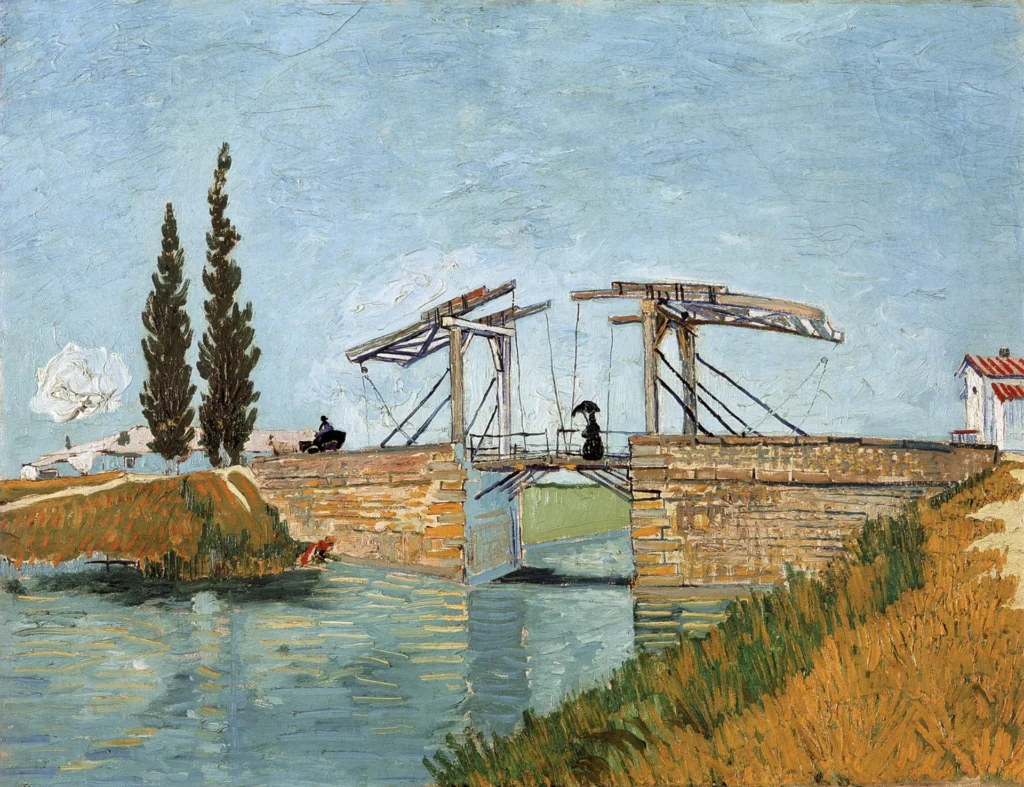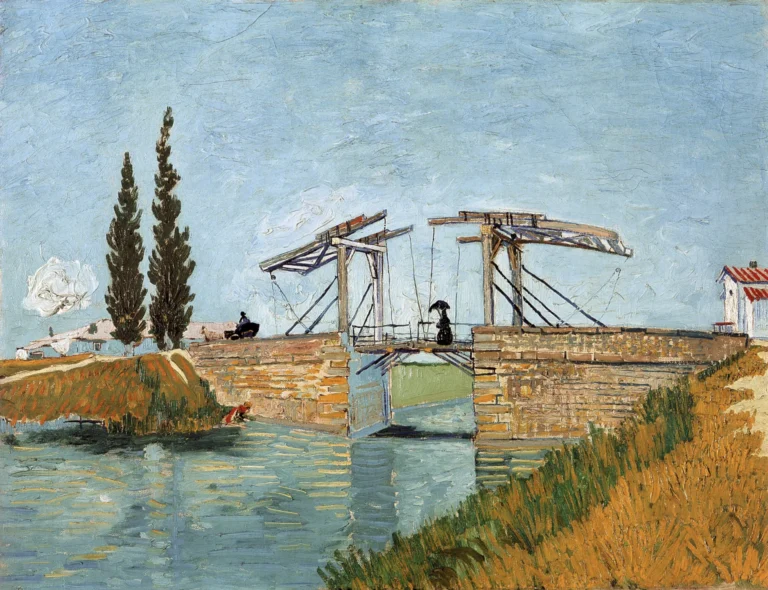Langlois Bridge At Arles (1888)
Vincent van Gogh's Langlois Bridge at Arles is a remarkable series of paintings and drawings executed in 1888, representing the iconic Pont de Réginelle in Arles, France. This wooden drawbridge inspired multiple versions, including oil paintings and a watercolor, which highlight Van Gogh's mastery of color and form. The artworks reflect the artist's deep connection to the landscape and demonstrate his use of vibrant colors and unique perspective techniques.
Year 1888
About the Artwork
During his time in Arles, Vincent van Gogh developed a profound admiration for the local landscape, particularly the charming drawbridge known as the Pont de Réginelle. Built around 1820, this bridge became a symbol of Van Gogh's exploration of Impressionism, where he meticulously created several variations to capture its essence. His artistic innovations during this period were marked by a bold use of color and attention to detail, seeking to depict not just the physical structure, but also the life surrounding it, as seen in scenes featuring women washing linens nearby. The Langlois Bridge series stands as a vital chapter in Van Gogh's artistic journey, showcasing the artist's dedication to exploring the interplay of light, color, and form.
Did You Know
The Langlois Bridge fascinated Van Gogh not only for its aesthetic qualities but also due to its Dutch engineering design, which resonated with his roots and artistic inspiration.
Van Gogh created several interpretations of the Langlois Bridge, totaling four oil paintings, one watercolor, and four drawings, showcasing his artistic exploration of a single subject.
The Langlois Bridge series illustrates Van Gogh’s connection to the landscape of Arles, capturing rural life and the vibrant colors of the region, which played a crucial role in his artistic development.










